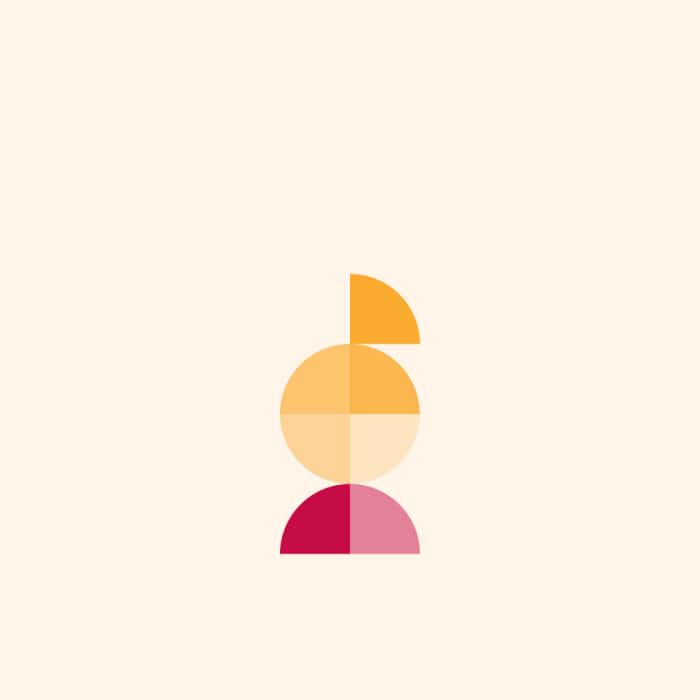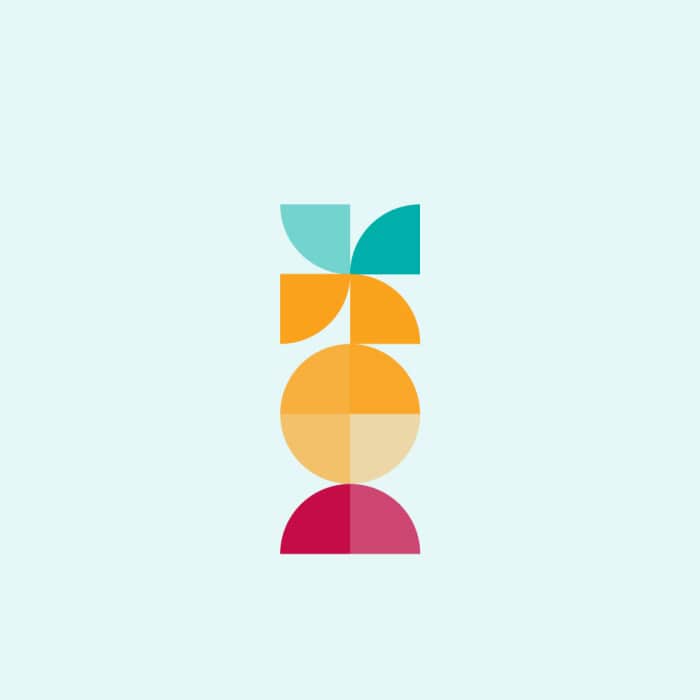Music & Performing Arts
Orff Schulwerk is an approach to music education that combines music, movement, drama, and speech into creative, child-centered learning. It emphasizes exploration and improvisation using accessible instruments like xylophones, percussion, and the human voice. Rooted in play, it encourages students to learn by doing, often through rhythmic patterns, folk songs, and collaborative performance.
Deeply interdisciplinary, Orff Schulwerk connects naturally with the arts, STEAM, Spanish, and other subjects, supporting cross-curricular learning and fostering creativity across many areas of study. Integrated with the Orff approach, drama becomes a powerful tool for connecting music to real-world experiences and other areas of learning.
Preschool
Children begin their musical journey through playful exploration of songs, dances, and storytelling. They explore basic musical elements while developing motor skills and rhythm through movement and percussion. Singing games build listening and vocal skills, laying the foundation for beat, pulse, and musical expression in Kindergarten.

Kindergarten
Students explore musical concepts and rhythm through expressive opposites such as high and low or slow and fast. They learn beat, pulse, and meter through games and movement activities, including simple dances. Various non-traditional visual notations help students understand concepts of beat, pulse, pitch, and form. Movement and drama are explored through creative exercises, folk dances, clapping games, and acting out stories and plays.

1st Grade
Students dive deeper into music through ensemble playing, movement, singing, and drama. They explore the pentatonic scale and Orff instruments, learning to collaborate in small groups. Creative movement, circle dances, simple scripts, and improvisation help bring music to life. Students create their own rhythms, melodies, and choreography, building confidence, creativity, and joy. Highlights of the year include a Halloween performance and the 1st grade play.

2nd Grade
Students build on the musical work of previous years, staying with simple melodic forms, drone accompaniments, basic rhythmic and melodic notation and adding the concept of modes of the pentatonic scale. The Orff ensemble, including xylophones, metallophones, and glockenspiels, is still the major instrumental ensemble, and the classes are filled with creative movement, circle and partner dances and singing and ear-training work. Performances feature a Halloween ritual, a 2nd grade play, and a puppet show celebrating the Lunar New Year.

3rd Grade
Students expand their musical skills by learning transposition and hexatonic scales, and they begin playing soprano recorders as part of the Orff ensemble. They explore making their own instruments and start reading standard music notation, including meters like 2/4, 3/4, and 4/4. Movement becomes more advanced with complex dances, Laban effort shapes, and drama improvisation games. Students also connect music with visual arts by creating inspired projects and composing for the recorder. The year’s highlights include a Halloween ritual, the 3rd grade play, and the Spring Concert.

4th Grade
Students deepen their musical vocabulary by playing and singing modal scales and learning the alto recorder, while many begin playing orchestral instruments like flute, clarinet, violin, or cello. They study more advanced notation concepts and practice improvising and composing variations on simple bass patterns. Creative movement with Laban effort shapes and drama improv games enhance expression, and students create choreography and art-inspired projects. Performances include a Halloween ritual, the 4th grade play, and the Spring Concert.

5th Grade
Students continue work in the full diatonic scale, exploring harmonic shifts, and notation of 6/8 rhythms, syncopation, and sixteenth notes. Students play in Ensemble on the Orff instruments, recorder consort, and ukulele. Students continue their work on vocal technique in a weekly chorus rehearsal. Creative movement includes a focus on elemental Laban shapes and group choreography assignments. Performances include a Halloween ritual, the 5th grade play, and the Spring Concert.

6th Grade
Students explore music as culture, focusing on traditional music, dance, and games from around the world. Students sing, dance, and play in the Orff ensemble. Creative work with composition, choreography, and some projects with animation and video are also included. Students arrange melodies, chants, and poems, and create compositions inspired by Visual Arts. Students perform in school-side assemblies, in the Middle School Spring Concert, and a 6th grade play based on a myth or folk tale.

7th Grade
Students explore music through history, studying Carl Orff, medieval music, Renaissance dance, and styles from the Baroque to Impressionism periods, alongside pop and contemporary techniques. They play marimbas and Orff ensembles, enriched by instruments students bring, like violin, cello, piano, clarinet, and guitar. Students compose in many styles, creating “scary” soundtracks, silent film scores, a cappella projects, stop-motion animations, and music for A Midsummer Night’s Dream. Performances happen during school assemblies, Shakespeare plays, and the Spring Concert.

8th Grade
Students focus on jazz, exploring the major branches of the blues and the jazz standard, and dipping into related forms and styles like ragtime, swing, and Latin jazz. Students learn about major jazz singers, instrumentalists and composers, and explore their contributions to the art form as well as stories of their struggles with institutionalized racism and the legacy of slavery. Students play on the chromatic percussion ensemble, drumset, and bass. Improvisation is emphasized, and students continue movement exploration with body percussion and swing dance basics.

Preschool
Children begin their musical journey through playful exploration of songs, dances, and storytelling. They explore basic musical elements while developing motor skills and rhythm through movement and percussion. Singing games build listening and vocal skills, laying the foundation for beat, pulse, and musical expression in Kindergarten.

Kindergarten
Students explore musical concepts and rhythm through expressive opposites such as high and low or slow and fast. They learn beat, pulse, and meter through games and movement activities, including simple dances. Various non-traditional visual notations help students understand concepts of beat, pulse, pitch, and form. Movement and drama are explored through creative exercises, folk dances, clapping games, and acting out stories and plays.

1st Grade
Students dive deeper into music through ensemble playing, movement, singing, and drama. They explore the pentatonic scale and Orff instruments, learning to collaborate in small groups. Creative movement, circle dances, simple scripts, and improvisation help bring music to life. Students create their own rhythms, melodies, and choreography, building confidence, creativity, and joy. Highlights of the year include a Halloween performance and the 1st grade play.

2nd Grade
Students build on the musical work of previous years, staying with simple melodic forms, drone accompaniments, basic rhythmic and melodic notation and adding the concept of modes of the pentatonic scale. The Orff ensemble, including xylophones, metallophones, and glockenspiels, is still the major instrumental ensemble, and the classes are filled with creative movement, circle and partner dances and singing and ear-training work. Performances feature a Halloween ritual, a 2nd grade play, and a puppet show celebrating the Lunar New Year.

3rd Grade
Students expand their musical skills by learning transposition and hexatonic scales, and they begin playing soprano recorders as part of the Orff ensemble. They explore making their own instruments and start reading standard music notation, including meters like 2/4, 3/4, and 4/4. Movement becomes more advanced with complex dances, Laban effort shapes, and drama improvisation games. Students also connect music with visual arts by creating inspired projects and composing for the recorder. The year’s highlights include a Halloween ritual, the 3rd grade play, and the Spring Concert.

4th Grade
Students deepen their musical vocabulary by playing and singing modal scales and learning the alto recorder, while many begin playing orchestral instruments like flute, clarinet, violin, or cello. They study more advanced notation concepts and practice improvising and composing variations on simple bass patterns. Creative movement with Laban effort shapes and drama improv games enhance expression, and students create choreography and art-inspired projects. Performances include a Halloween ritual, the 4th grade play, and the Spring Concert.

5th Grade
Students continue work in the full diatonic scale, exploring harmonic shifts, and notation of 6/8 rhythms, syncopation, and sixteenth notes. Students play in Ensemble on the Orff instruments, recorder consort, and ukulele. Students continue their work on vocal technique in a weekly chorus rehearsal. Creative movement includes a focus on elemental Laban shapes and group choreography assignments. Performances include a Halloween ritual, the 5th grade play, and the Spring Concert.

6th Grade
Students explore music as culture, focusing on traditional music, dance, and games from around the world. Students sing, dance, and play in the Orff ensemble. Creative work with composition, choreography, and some projects with animation and video are also included. Students arrange melodies, chants, and poems, and create compositions inspired by Visual Arts. Students perform in school-side assemblies, in the Middle School Spring Concert, and a 6th grade play based on a myth or folk tale.

7th Grade
Students explore music through history, studying Carl Orff, medieval music, Renaissance dance, and styles from the Baroque to Impressionism periods, alongside pop and contemporary techniques. They play marimbas and Orff ensembles, enriched by instruments students bring, like violin, cello, piano, clarinet, and guitar. Students compose in many styles, creating “scary” soundtracks, silent film scores, a cappella projects, stop-motion animations, and music for A Midsummer Night’s Dream. Performances happen during school assemblies, Shakespeare plays, and the Spring Concert.

8th Grade
Students focus on jazz, exploring the major branches of the blues and the jazz standard, and dipping into related forms and styles like ragtime, swing, and Latin jazz. Students learn about major jazz singers, instrumentalists and composers, and explore their contributions to the art form as well as stories of their struggles with institutionalized racism and the legacy of slavery. Students play on the chromatic percussion ensemble, drumset, and bass. Improvisation is emphasized, and students continue movement exploration with body percussion and swing dance basics.



